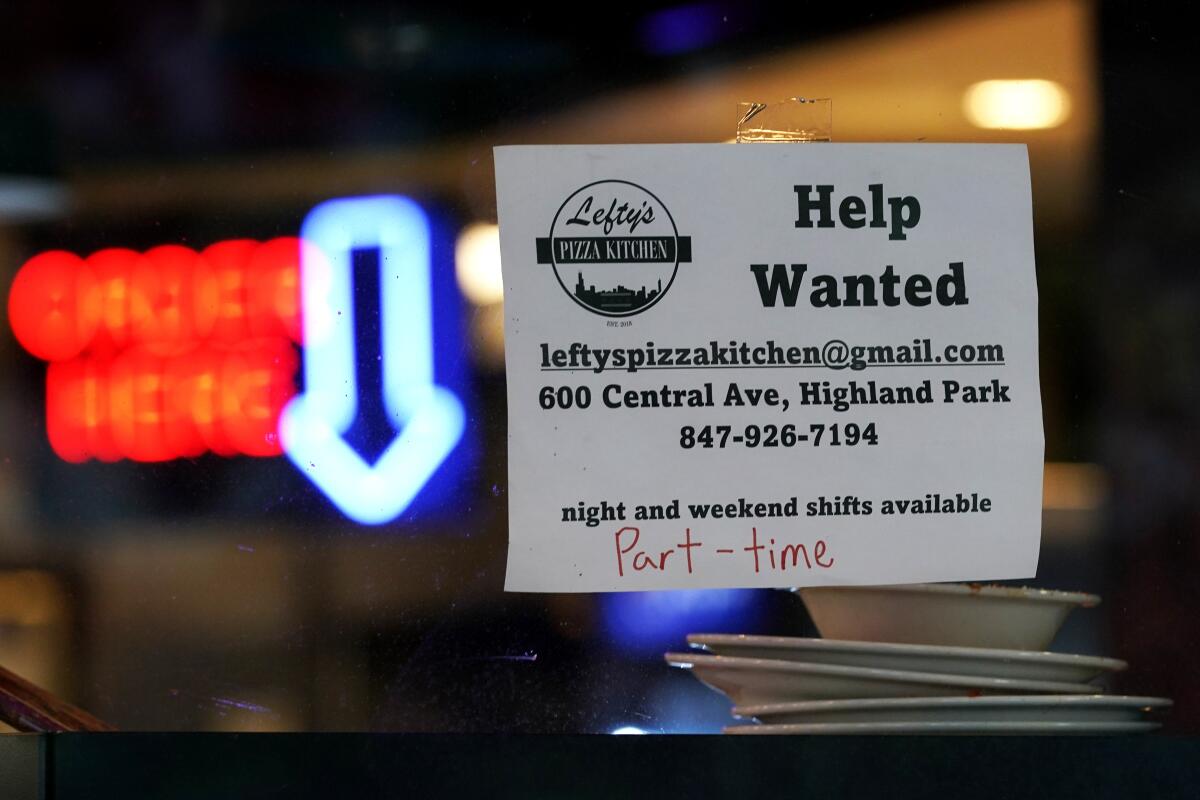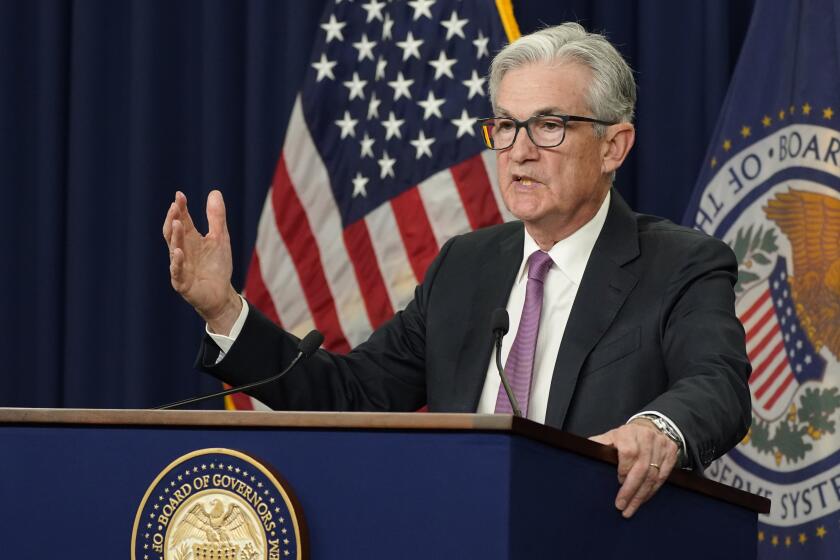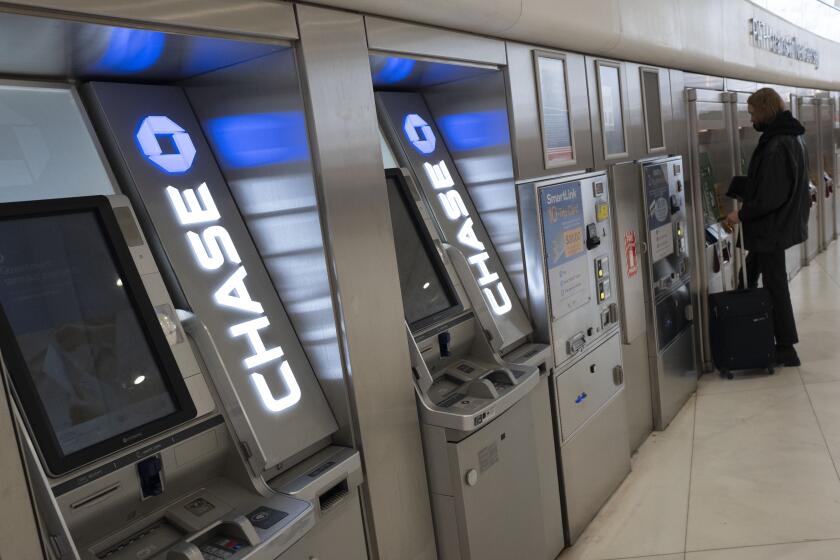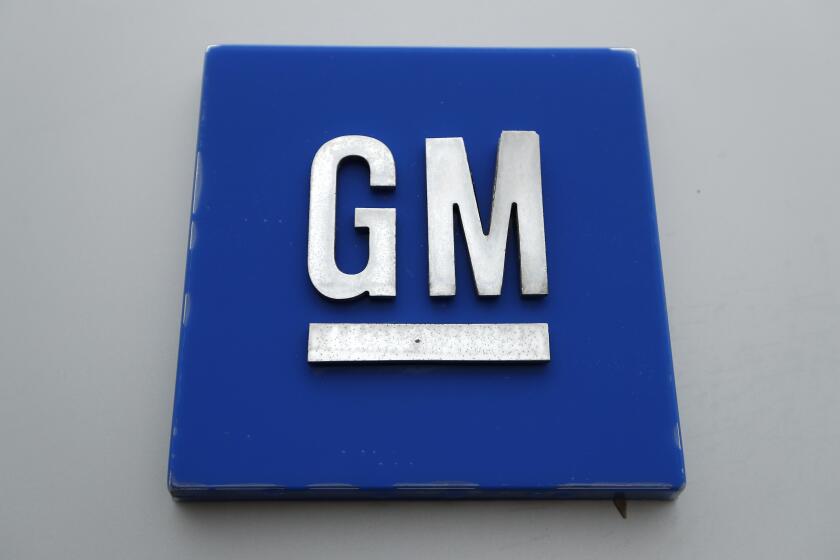U.S. added 315,000 jobs in August despite inflation and rising interest rates

- Share via
WASHINGTON — America’s employers slowed their hiring but still added 315,000 jobs in August in the face of rising interest rates, high inflation and sluggish consumer spending.
The government reported Friday that last month’s job gain was down from 526,000 in July and less than the average gain of the previous three months. The unemployment rate rose to 3.7%, from a half-century low of 3.5% in July, as more Americans came off the sidelines to look for jobs.
Even though the job gain was smaller than in July, the report still pointed to a resilient labor market and an economy that is not near recession. The number of people looking for work jumped last month, which boosted the unemployment rate because not all of them found jobs immediately. The influx of job seekers should help employers fill a near-record number of openings in the coming months.
The smaller job growth in August will probably be welcomed by the Federal Reserve. The Fed is rapidly raising interest rates to try to cool hiring and wage growth, which have been consistently strong. Businesses typically pass the cost of higher wages on to their customers through higher prices, thereby fueling inflation.
Fed officials hope that by raising borrowing costs across the economy, they can reduce inflation from a near-40-year high. Some economists fear, though, that the Fed is tightening credit so aggressively that it will eventually tip the economy into recession.
As Angelenos sweat through extreme temperatures, workers are doing whatever they can to cool off, from drinking two gallons of water to wearing ice packs and a fan.
Average hourly pay rose 10 cents to $32.36 in August, an increase of 5.2% from a year ago. That is still higher than Fed officials want to see. Some have said they would prefer wages to be rising at a pace closer to 3% to help rein in rising prices.
Most industries added workers last month, with the biggest increases in professional and business services, which gained 68,000 jobs. That sector includes architects, engineers and some tech workers. Healthcare added 61,500 jobs, retailers 44,000.
The number of job openings remains high and the pace of layoffs low, indicating that most businesses still want to hire and that the economy probably isn’t in, or even close to, a recession. The broadest measure of the economy’s output — gross domestic product — has shrunk for two straight quarters, meeting one informal definition of a recession.
Most economists, though, don’t think a recession has begun until the unemployment rate has risen steadily. Even so, worries about a forthcoming slump have grown after Federal Reserve Chair Jerome H. Powell, in a high-profile speech last week, made clear that to curb inflation, the Fed was prepared to continue raising short-term interest rates for the foreseeable future and to keep them elevated. Powell warned that the Fed’s inflation fight would probably cause pain for Americans in the form of a weaker economy and job losses.
Federal Reserve Chair Jerome H. Powell says more large interest rate hikes are likely in coming months to combat inflation.
The Fed chair also said the job market is “clearly out of balance,” with demand for workers “substantially exceeding” the available supply. Friday’s jobs figures and a report earlier this week that the number of job openings rose in July after three months of declines suggested that the Fed’s rate hikes so far haven’t restored any such balance. There are roughly two advertised job openings for every unemployed worker.
The central bank has raised its short-term rate to a range of 2.25% to 2.5% this year, after the fastest series of increases since the early 1990s. It has projected that its key rate will reach a range of 3.25% to 3.5% by year’s end. Those rate hikes have made borrowing and spending steadily more expensive for individuals and businesses. The housing market, in particular, has been weakened by higher loan rates.
The jobs figures are helping to fill out the economic backdrop as campaigning in this fall’s midterm elections intensifies. Republicans have pointed to high inflation to try to pummel Democrats. The Biden administration has pushed back and claimed credit for a robust pace of job growth.
Wages are rising at their fastest pace in decades as employers scramble to fill jobs at a time when fewer Americans are working or seeking work in the aftermath of the COVID-19 pandemic. Average hourly pay jumped 5.2% in July from a year earlier. Still, that was less than the 5.6% year-over-year rise in March, which was the largest annual increase in 15 years of records outside of the spring of 2020, when the pandemic struck.
Consumers already paying more for gas, groceries and everyday items should expect higher prices in other parts of their lives after the Fed rate increase.
Some skeptics warn that the Fed may be focusing excessively on the strength of the job market when other indicators suggest that the economy is noticeably weakening. Consumer spending, for example, and manufacturing have slowed. The central bank might raise rates too far as a result, to the point where it causes a deeper recession than might be needed to conquer inflation.
The economic picture is highly uncertain, with the healthy pace of hiring and low unemployment at odds with the government’s estimate that the economy shrank in the first six months of this year.
A related measure of the economy’s growth that focuses on incomes shows that the economy is still expanding, if at a weak pace.
So far, the Fed’s rate hikes have severely dented the housing market. With the average rate on a 30-year mortgage reaching 5.66% last week — double the level of a year ago — sales of existing homes have fallen for six straight months.
Consumers have moderated their spending in the face of much higher prices, though they spent more in July even after adjusting for inflation. But companies’ investment in new equipment has slowed, indicating that they have an increasingly cautious outlook on the economy.
More to Read
Inside the business of entertainment
The Wide Shot brings you news, analysis and insights on everything from streaming wars to production — and what it all means for the future.
You may occasionally receive promotional content from the Los Angeles Times.













